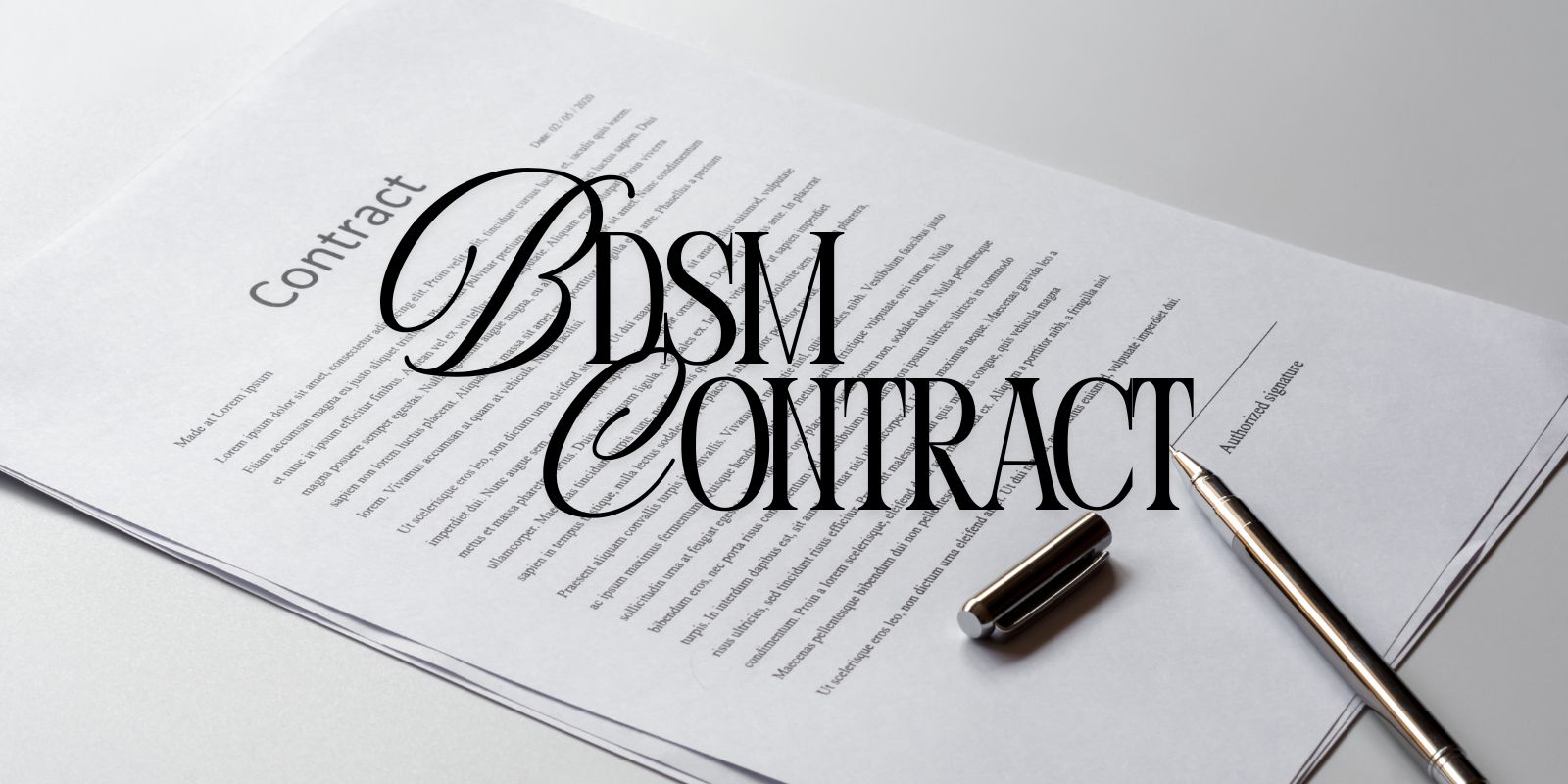BDSM Contracts: Crafting Agreements for Safe and Consensual Dynamics
Power exchange thrives on trust and clear boundaries. A BDSM contract sets the foundation for safe, consensual exploration. This guide shares practical insights to craft agreements that enhance intimacy and respect.
Table of Contents
- Why A BDSM Contract Matters
- What Makes a BDSM Contract
- Key Components of a Strong Contract
- Negotiating and Writing Your Contract
- Common Misconceptions About BDSM Contracts
- BDSM Contract Template
- Key Takeaways
- FAQ: BDSM Contracts
Why A BDSM Contract Matters
During my time practicing BDSM, I’ve seen a BDSM contract prevent misunderstandings and build trust. These agreements clarify roles, limits, and expectations, ensuring safety and consent in power exchange dynamics.
Without clear boundaries, partners risk discomfort or harm. A contract creates a shared roadmap, reducing guesswork. It fosters open communication, letting both parties express desires and limits freely.
Trust is the heart of any dynamic. Contracts reinforce it by documenting mutual agreements. They’re not about control but about respect. Curious about communication in intimacy? Exploring sexual compatibility shows how honest talks strengthen connections.
What Makes a BDSM Contract
A BDSM agreement is a non-legally binding agreement outlining roles, boundaries, and expectations. It’s a tool for clarity, ensuring all parties consent fully to the dynamic’s terms.
Unlike casual agreements, contracts formalize negotiations. They cover roles like Dominant or submissive, safewords, and limits. This structure supports safe exploration, whether for a scene or ongoing relationship.
Contracts aren’t rigid; they evolve with needs. Resources like Kinky Curiosity emphasize their role in fostering consent. A BDSM agreement builds a foundation where trust and safety drive pleasure.
Key Components of a Strong Contract
In my experience teaching kink, a BDSM contract thrives on clear, tailored components. Key elements include roles, limits, safewords, rules, punishments, duration, and termination clauses. Each piece ensures safety and consent, customized to your dynamic.
Roles define who’s Dominant, submissive, or other, setting expectations for behavior. Limits—hard (non-negotiable) and soft (flexible)—protect everyone. Safewords like “red” for stop or “yellow” for pause are vital for control. Rules outline daily protocols or scene-specific actions, while punishments (e.g., spanking, privilege loss) must be consensual.
Duration sets the contract’s timeframe, often with check-ins for renegotiation. Termination clauses allow either party to exit respectfully. These components create a framework where trust flourishes. For example, exploring practices like pegging requires clear boundaries, which a contract supports. A strong BDSM agreement reflects your unique needs, ensuring all parties feel secure and valued.
Negotiating and Writing Your Contract
Negotiating a BDSM agreement starts with open, honest discussion. Talk about desires, fears, and boundaries in a safe space. This process builds trust and ensures mutual consent before any agreement is drafted.
Start by listing roles, limits, and safewords. Discuss rules, punishments, and duration, ensuring both parties agree. Write clearly, avoiding vague terms. Revise together to reflect shared goals. Insights from Echoed Bounds highlight how thorough negotiations prevent issues. A BDSM agreement is a living document, open to tweaks as dynamics evolve.
Common Misconceptions About BDSM Contracts
I’ve heard myths about BDSM contracts that confuse beginners. Many think they’re legally binding, rigid, or only for extreme dynamics. These misconceptions can deter people from using them.
A power exchange contract isn’t legally enforceable; it’s a consensual agreement for trust and clarity. It’s not rigid—terms can evolve through renegotiation. Contracts suit any dynamic, from light to intense, not just extreme play.
Some believe contracts limit freedom, but they empower by ensuring consent. Resources like Kaycie Crossley’s guide show how contracts foster safety for beginners. A BDSM contract is a flexible tool, tailored to your needs, enhancing mutual respect.
BDSM Contract Template
A BDSM agreement should be simple and customizable. Below is a template to start your own, ensuring clarity and consent for any dynamic.
Adapt this to your needs, whether exploring kinks like a foot fetish or power exchange. Discuss thoroughly before signing.
Sample BDSM contract template:
- Parties: Names or titles (e.g., Dominant, submissive).
- Duration: Start/end dates or review period (e.g., 3 months).
- Roles: Define Dominant/submissive responsibilities.
- Limits: List hard (non-negotiable) and soft (flexible) limits.
- Safewords: “Red” (stop), “yellow” (pause).
- Rules: Protocols for behavior or scenes.
- Punishments: Consensual consequences (e.g., time-outs).
- Termination: Conditions for ending the agreement.
Key Takeaways
In my kink education work, I’ve seen a BDSM agreement transform dynamics by fostering trust and clarity. These agreements outline roles, limits, and expectations, ensuring safe, consensual play. They’re flexible tools, not rigid rules, tailored to each relationship.
Key points to remember:
- A power exchange agreeement ensures safety and consent through clear boundaries.
- Customize roles, safewords, and limits to fit your dynamic.
- Negotiation is ongoing, allowing contracts to evolve with needs.
- Misconceptions like legal binding are false; contracts prioritize trust.
A BDSM agreement empowers partners to explore power exchange with confidence, making intimacy safer and more fulfilling.

FAQ: BDSM Contracts
Are BDSM contracts legally binding?
A BDSM agreement isn’t legally enforceable. It’s a consensual agreement to clarify roles and boundaries. Focus is on trust, not legal obligation. Always prioritize ongoing consent.
What should a BDSM contract include?
Include roles, hard/soft limits, safewords, rules, punishments, duration, and termination clauses. Tailor it to your dynamic. Clear terms prevent misunderstandings. Discuss everything thoroughly first.
How do we negotiate limits in a BDSM contract?
Discuss desires, fears, and boundaries openly. List hard and soft limits clearly. Use honest communication to ensure mutual comfort. Revisit limits as trust grows.
Can BDSM contracts change over time?
Yes, contracts are flexible. Regular check-ins allow renegotiation to reflect evolving needs. Adjustments keep the agreement relevant. Consent remains the foundation for changes.

Risetob is a sex toy reviewer sharing honest, detailed insights to help readers choose products that feel good, work well, and are worth the money.



Leave a Reply